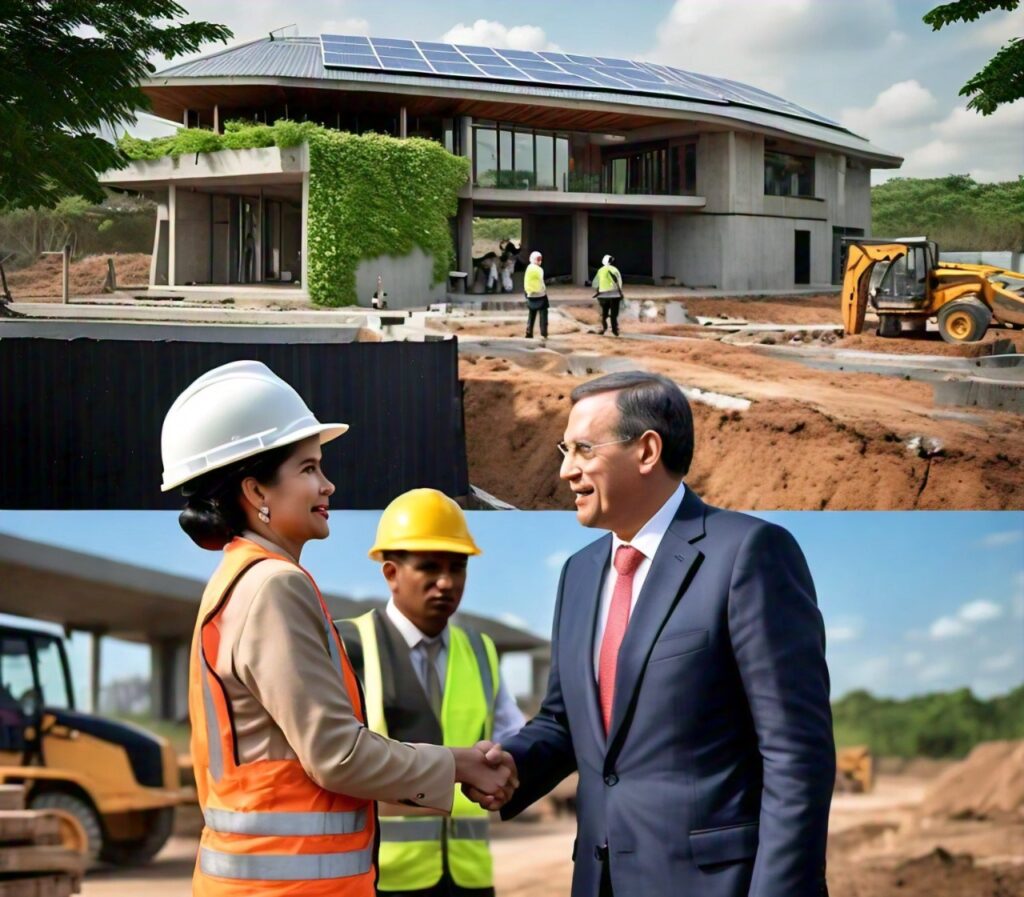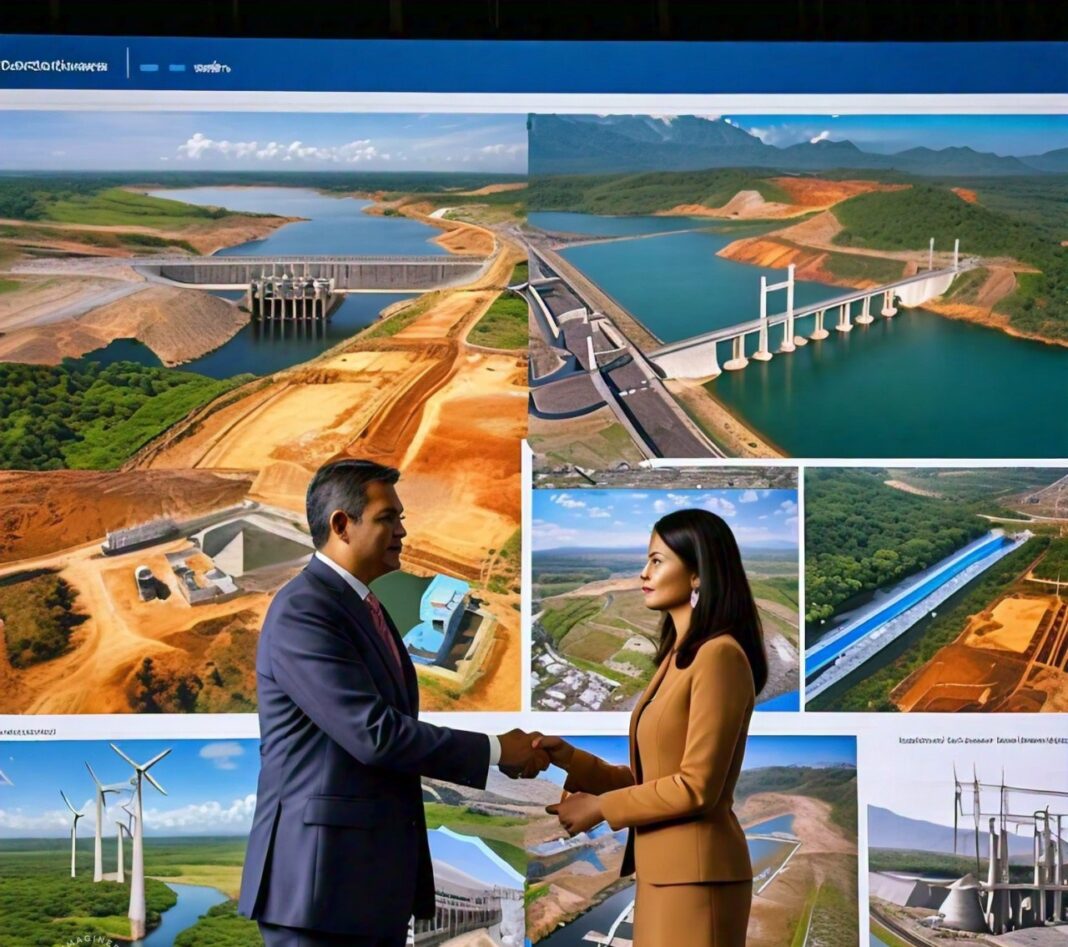As the global economy continues to evolve, emerging markets present significant opportunities for infrastructure investment, particularly for economic development professionals. These markets, characterized by rapid urbanization, population growth, and increasing demand for modern infrastructure, are increasingly attracting the attention of investors seeking to capitalize on their high growth potential. In 2024, several factors are driving interest in emerging markets infrastructure, including favorable government policies, the need for sustainable development, and the expansion of digital and physical infrastructure to support economic growth.
Economic development professionals are uniquely positioned to identify and evaluate these opportunities, leveraging their expertise to navigate the complexities of emerging markets. The focus is not just on traditional infrastructure projects such as roads, bridges, and ports, but also on innovative sectors like renewable energy, digital infrastructure, and urban development. With the right strategies and funding sources, these professionals can play a crucial role in driving sustainable economic growth in these regions.
This article delves into the current landscape of emerging markets infrastructure, exploring the investment opportunities available, the strategic approaches required, and the potential challenges and rewards. By understanding these dynamics, economic development professionals can better position themselves to guide investments that not only yield financial returns but also contribute to the long-term development goals of emerging economies.
Current Landscape of Infrastructure in Emerging Markets
Infrastructure Needs and Priorities
Emerging markets are at a critical juncture in their development, requiring substantial investments in infrastructure to sustain economic growth and improve the quality of life for their populations. These markets, spanning regions such as Southeast Asia, Latin America, and Sub-Saharan Africa, face a diverse set of infrastructure needs that reflect their varying stages of development and economic priorities.
Transportation Infrastructure:
- Roads and Highways: In many emerging markets, road networks are underdeveloped, hindering the efficient movement of goods and people. Upgrading and expanding these networks is often a top priority, particularly in fast-growing urban areas where congestion is a significant challenge.
- Ports and Airports: As trade volumes increase, ports and airports are becoming crucial nodes in global supply chains. Emerging markets are focusing on expanding and modernizing these facilities to handle larger volumes of cargo and passengers, thereby enhancing their global trade competitiveness(FT Institutional).
Energy Infrastructure:
- Renewable Energy: With the global shift towards sustainability, many emerging markets are prioritizing renewable energy projects. Countries such as Brazil, India, and South Africa are investing heavily in solar, wind, and hydroelectric power to meet growing energy demands while reducing carbon emissions. These investments are also driven by the need to diversify energy sources and reduce reliance on fossil fuels(FT Institutional).
- Grid Expansion and Modernization: Expanding and modernizing the electricity grid is essential to support both urban and rural development. In many emerging markets, large segments of the population still lack access to reliable electricity, making grid development a critical infrastructure need.
Water and Sanitation:
- Water Supply Systems: Ensuring access to clean and reliable water sources is a pressing issue in many emerging markets. Investments in water supply infrastructure, including pipelines, treatment plants, and reservoirs, are essential for public health and agricultural productivity.
- Wastewater Management: Developing robust wastewater management systems is increasingly important as urban populations grow. This involves the construction of sewage treatment plants and the expansion of sewer networks to prevent environmental degradation and protect water resources.
Digital Infrastructure:
- Telecommunications Networks: The digital economy is rapidly expanding in emerging markets, driving the need for investments in telecommunications infrastructure. This includes the rollout of 4G and 5G networks, as well as the expansion of broadband internet access to underserved areas.
- Smart Cities and IoT: Emerging markets are exploring the development of smart cities, leveraging the Internet of Things (IoT) to improve urban management and services. Investments in digital infrastructure are seen as a way to enhance the efficiency of transportation, energy use, and public services(FT Institutional).
Also Read: Why Retail Sales Figures Are a Leading Economic Indicator

Economic Impact of Infrastructure Development
The economic impact of infrastructure development in emerging markets cannot be overstated. Well-planned infrastructure projects have the potential to transform economies by improving connectivity, increasing productivity, and attracting foreign investment.
Economic Growth and Job Creation:
- Infrastructure projects are significant drivers of economic growth. They create jobs during the construction phase and have long-term benefits by enabling businesses to operate more efficiently. For instance, improved transportation networks reduce logistics costs, allowing companies to expand their operations and access new markets(FT Institutional).
Attracting Foreign Direct Investment (FDI):
- A robust infrastructure is often a prerequisite for attracting foreign direct investment. Multinational companies are more likely to invest in regions where they can rely on efficient transportation, energy, and digital networks. As a result, emerging markets with strong infrastructure foundations are better positioned to attract FDI, which in turn spurs further economic development(FT Institutional).
Poverty Alleviation and Social Development:
- Infrastructure development also plays a critical role in poverty alleviation by improving access to essential services such as healthcare, education, and clean water. This has a direct impact on social development, leading to better health outcomes, higher educational attainment, and overall improvements in quality of life.
Identifying Investment Opportunities
High-Potential Sectors for Investment
Investment opportunities in emerging markets infrastructure are vast and varied, spanning multiple sectors that are critical for economic growth. As these markets continue to develop, certain sectors have emerged as particularly attractive for investors due to their potential for high returns and long-term growth.
- Renewable Energy:
- Solar and Wind Power: Renewable energy is one of the most promising sectors for infrastructure investment in emerging markets. Countries like India, Brazil, and South Africa are rapidly expanding their renewable energy capacities to meet growing energy demands while addressing climate change concerns. Solar and wind power projects, in particular, are attracting significant investment due to favorable government policies, declining technology costs, and increasing demand for clean energy(FT Institutional).
- Hydropower and Geothermal Energy: Beyond solar and wind, there is also considerable potential in hydropower and geothermal energy. For example, countries in Southeast Asia and Latin America, with abundant natural resources, are developing large-scale hydropower projects. Similarly, geothermal energy is being explored in regions with volcanic activity, such as East Africa and parts of Central America.
- Urban Transport and Smart Cities:
- Mass Transit Systems: Rapid urbanization in emerging markets is driving the need for efficient and sustainable urban transport solutions. Investments in mass transit systems, such as metro rail, bus rapid transit (BRT), and light rail, are critical for reducing traffic congestion and pollution in densely populated cities. These projects not only improve urban mobility but also enhance the overall quality of life, making them attractive investment opportunities(FT Institutional).
- Smart City Initiatives: The development of smart cities, which leverage technology to improve urban infrastructure and services, is another high-potential area. Investments in smart grids, intelligent traffic management systems, and IoT-enabled public services are gaining traction in countries like China and India, where governments are actively promoting smart city projects as part of their urban development strategies.
- Digital Infrastructure:
- Broadband and Telecommunications: As digital transformation accelerates globally, the demand for robust digital infrastructure in emerging markets is soaring. Investments in broadband networks, 4G/5G expansion, and data centers are crucial to support the growing digital economy. These projects are particularly attractive in markets with a large, young population and increasing internet penetration(FT Institutional).
- E-commerce and Fintech Infrastructure: The rise of e-commerce and fintech in emerging markets is creating new investment opportunities in digital payment systems, logistics, and online platforms. Investors are increasingly looking at infrastructure projects that support the digital economy, including mobile payment networks and e-commerce fulfillment centers.
- Water and Sanitation:
- Water Supply Projects: Access to clean water remains a critical issue in many emerging markets. Investments in water supply infrastructure, such as desalination plants, pipelines, and water treatment facilities, are essential to meet the needs of growing populations and industries. These projects are particularly important in regions facing water scarcity and are often supported by both public and private sector funding(FT Institutional).
- Sanitation and Waste Management: The need for improved sanitation and waste management systems presents another significant investment opportunity. Emerging markets are increasingly prioritizing investments in sewage treatment plants, waste recycling facilities, and solid waste management systems to address public health concerns and environmental challenges.
Further Read: The Role of Currency Exchange Rates in Economic Forecasting

Emerging Markets with Promising Investment Prospects
Identifying the right emerging markets to invest in is crucial for maximizing returns and minimizing risks. While opportunities exist across various regions, certain countries and markets stand out due to their economic stability, growth potential, and favorable investment climates.
- Southeast Asia:
- Countries like Vietnam, Indonesia, and the Philippines are experiencing rapid economic growth, driven by urbanization, industrialization, and increasing foreign investment. These markets offer substantial opportunities in sectors such as transportation, energy, and digital infrastructure(FT Institutional).
- Sub-Saharan Africa:
- Sub-Saharan Africa, with its vast natural resources and young population, presents significant potential for infrastructure investment, particularly in renewable energy and water supply projects. Countries like Kenya, Nigeria, and South Africa are leading the way in attracting foreign investment into their infrastructure sectors(FT Institutional).
- Latin America:
- Latin American countries, including Brazil, Mexico, and Colombia, are focusing on modernizing their infrastructure to support economic development. Renewable energy, urban transport, and telecommunications are among the key sectors attracting investment in this region(FT Institutional).
- Eastern Europe and Central Asia:
- Emerging markets in Eastern Europe and Central Asia, such as Turkey and Kazakhstan, are investing in infrastructure to enhance their connectivity with global markets. Energy, transport, and digital infrastructure projects are particularly prominent in these regions(FT Institutional).
Funding Sources and Investment Strategies
Public and Private Sector Funding
Securing funding for infrastructure projects in emerging markets requires a mix of public and private sector involvement. Each plays a vital role in providing the necessary capital, and their collaboration often determines the success of large-scale infrastructure initiatives.
- Government Funding and Public-Private Partnerships (PPPs):
- Government Initiatives: Governments in emerging markets are increasingly committing significant resources to infrastructure development. They often allocate funds from national budgets, secure loans from international financial institutions, or issue sovereign bonds to finance critical projects. This direct involvement is crucial for large-scale infrastructure initiatives like highway networks, power plants, and water supply systems.
- Public-Private Partnerships (PPPs): PPPs have become a popular model for infrastructure financing in emerging markets. These partnerships allow governments to leverage private sector expertise and capital while sharing risks. PPPs are particularly effective in sectors like transportation, energy, and urban development, where private companies can contribute technical expertise and innovative solutions while governments provide regulatory support and initial funding(FT Institutional).
- Multilateral Development Banks (MDBs):
- World Bank and Regional MDBs: Multilateral Development Banks, including the World Bank, the Asian Development Bank (ADB), and the African Development Bank (AfDB), play a pivotal role in funding infrastructure projects in emerging markets. These institutions provide long-term financing at favorable terms, often targeting projects that promote sustainable development and poverty reduction. MDBs are particularly active in funding renewable energy projects, water supply systems, and transportation infrastructure(FT Institutional).
- Blended Finance: MDBs often use blended finance, combining concessional funds from donor countries with private capital to reduce risks and make infrastructure projects more attractive to private investors. This approach is particularly effective in high-risk sectors or regions where private investment alone might not be sufficient.
Investment Strategies for Economic Development Professionals
Investing in emerging markets infrastructure requires a well-thought-out strategy that balances risk with the potential for high returns. Economic development professionals must consider various factors, including the political and economic stability of the target market, the regulatory environment, and the specific characteristics of the infrastructure sector in question.
- Risk Assessment and Mitigation:
- Political and Economic Risks: Investing in emerging markets often comes with heightened political and economic risks. Professionals must conduct thorough due diligence to assess the stability of the target country, including its legal and regulatory framework, political climate, and macroeconomic conditions. Strategies for mitigating these risks include investing in markets with strong governance and legal protections, diversifying investments across multiple regions or sectors, and seeking political risk insurance(FTInstitutional).
- Environmental and Social Risks: Infrastructure projects can have significant environmental and social impacts, which can lead to delays, cost overruns, or even project cancellations. To mitigate these risks, investors should ensure that projects comply with international environmental and social standards, engage with local communities, and conduct comprehensive environmental impact assessments before project initiation.
- Long-Term Investment Horizon:
- Infrastructure as a Long-Term Asset: Infrastructure investments typically have long payback periods, making them suitable for investors with a long-term horizon. Economic development professionals should focus on projects that offer stable and predictable returns over time, such as utility-scale renewable energy projects or toll road concessions. These investments can provide a reliable income stream, particularly in markets with growing demand for infrastructure services(FT Institutional).
- Exit Strategies: While infrastructure investments are long-term by nature, having a clear exit strategy is crucial. This could involve selling the investment to another institutional investor, listing the project on a local or international stock exchange, or refinancing the project to release equity. An effective exit strategy helps investors realize gains while managing risks throughout the investment lifecycle.
- Leveraging Local Partnerships: Partnering with local companies can be a valuable strategy for navigating the complexities of emerging markets. Local firms bring an understanding of the market, regulatory environment, and cultural context, which can be critical for the successful execution of infrastructure projects. Joint ventures or co-investments with local partners can also help mitigate risks and enhance project viability.
You can also Read: What is a Chartered Financial Analyst

- Engaging Local Governments: Building strong relationships with local governments is essential for gaining support and securing necessary approvals for infrastructure projects. Economic development professionals should engage with government officials early in the project planning process to align objectives and ensure that projects contribute to the broader development goals of the country.
Challenges and Risks in Emerging Markets Infrastructure Investment
Political and Regulatory Risks
1. Political Instability:
Investing in emerging markets often comes with the risk of political instability, which can manifest in various forms such as changes in government, civil unrest, or unexpected policy shifts. These factors can directly impact infrastructure projects, leading to delays, increased costs, or even project cancellations. For example, in some regions, regime changes may lead to the renegotiation or nullification of contracts, creating uncertainty for investors.
Example: In countries with volatile political climates, infrastructure projects may face the risk of expropriation or nationalization, where a government takes control of privately funded infrastructure assets without fair compensation. This was seen in the past in countries like Venezuela, where significant foreign investments were lost due to nationalization policies(FT Institutional).
2. Regulatory Uncertainty:
Emerging markets often have less developed regulatory frameworks, which can pose significant challenges for infrastructure investment. Inconsistent or unclear regulations can lead to delays in project approvals, increased compliance costs, and legal disputes. Investors must navigate complex bureaucracies and deal with the risk of sudden regulatory changes that can affect the financial viability of a project.
Example: Regulatory changes related to environmental standards or land acquisition processes can lead to costly project modifications or delays. In some cases, the introduction of new regulations after a project has already commenced can result in unforeseen financial burdens(FT Institutional).
Further Read: The Role of Business Investment in Economic Forecasting

Economic and Financial Risks
1. Currency Fluctuations:
Currency risk is a significant concern for infrastructure investors in emerging markets. Fluctuations in exchange rates can erode the returns on investment, especially when project revenues are in local currency, but debt servicing or returns are in a stronger foreign currency. Depreciation of the local currency can lead to higher costs and lower profitability.
Example: Investors in infrastructure projects in countries like Argentina have faced significant currency risks, as the Argentine peso has experienced substantial devaluation in recent years. This has led to increased costs for projects financed in foreign currencies, negatively impacting returns(FT Institutional).
2. Access to Capital:
Access to affordable capital can be more challenging in emerging markets due to higher perceived risks. Interest rates are often higher, and local financial markets may lack the depth and sophistication to provide long-term financing for large infrastructure projects. Additionally, international investors may face difficulties in securing financing from global institutions due to country risk assessments.
Example: In some African and Latin American countries, high-interest rates and underdeveloped capital markets have limited the availability of affordable long-term financing, making it difficult to fund large-scale infrastructure projects. This has often required investors to seek alternative financing arrangements, such as blended finance or partnerships with development banks(FT Institutional).
Conclusion
In conclusion, investing in emerging markets infrastructure presents both significant opportunities and substantial challenges. Economic development professionals who can navigate the complex landscape of political, regulatory, and financial risks will find that these markets offer high potential returns, particularly in sectors like renewable energy, urban transport, and digital infrastructure. However, success in these ventures requires careful planning, thorough due diligence, and strategic risk management.
By leveraging a mix of public and private sector funding, adopting innovative investment strategies, and learning from successful case studies, investors can effectively tap into the vast opportunities that emerging markets offer. At the same time, it is crucial to remain vigilant about the inherent risks, including political instability, regulatory changes, currency fluctuations, and social opposition. Addressing these challenges head-on with informed strategies and local partnerships will be key to achieving long-term success in emerging markets infrastructure investment.
Ultimately, while the path to successful infrastructure investment in emerging markets may be fraught with obstacles, the potential rewards—both financial and developmental—make it a compelling pursuit for forward-thinking economic development professionals.






